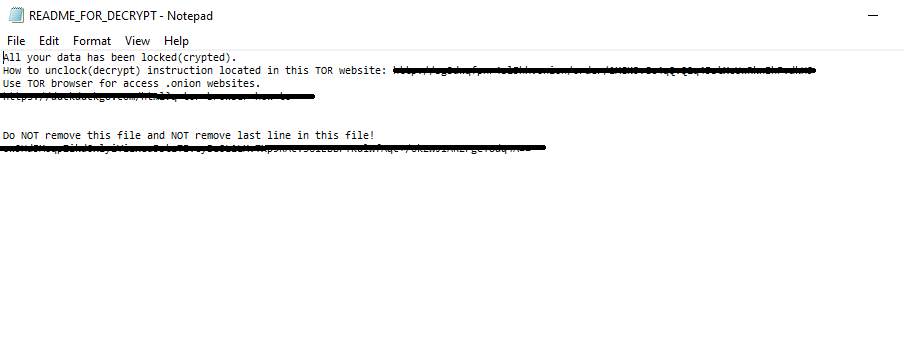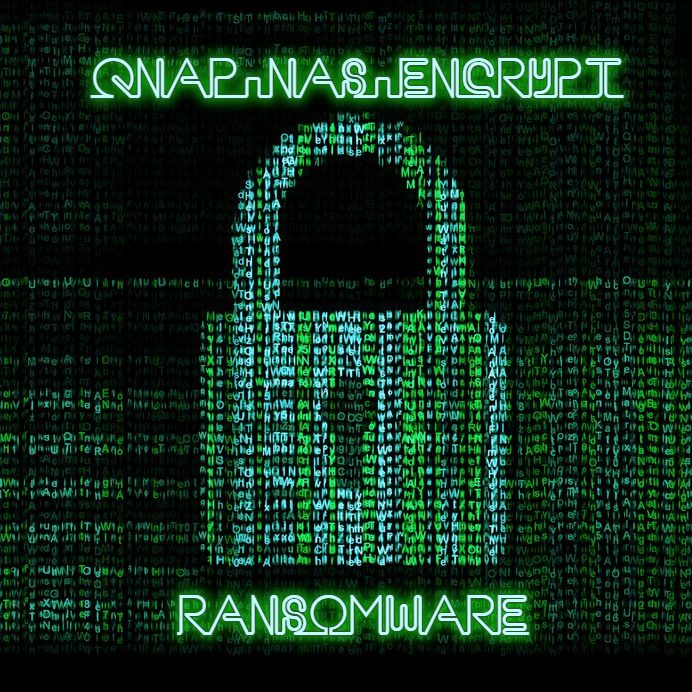What is QNAP-NAS-Encrypt Ransomware?
In this article, we describe possible ways and provide you with the instruction on how to remove QNAP-NAS-Encrypt Ransomware and how to decrypt .encrypt files. This ransomware is usually spread by e-mail messages, infected installers, different types of injections and other ways. There is no difference in how you’ve been infected, such malicious programs always have the same principles of work. When QNAP-NAS-Encrypt ransomware infects your device, some of your data becomes damaged and unreadable. This encryptor is characterized by the .encrypt extension, which adds to your data. Moreover, you can find the message in the file called READ_ME_TO_DECRYPT.TXT:

All your data has been locked(crypted).
How to unlock(decrypt) instruction located in this TOR website: *link*
Use TOR browser for access .onion websites.
*link*
Do NOT remove this file and NOT remove last line in this file!
*ID number*
As you can see there is no guarantee that intruder will return your files. Never pay fraudsters! They won't fulfill their promises! If QNAP-NAS-Encrypt has damaged some important data, you can try to follow our instruction to remove QNAP-NAS-Encrypt Ransomware and decrypt .encrypt files.
Update: Use following service to identify the version and type of ransomware you were attacked by: ID Ransomware. If you want to decrypt your files, please follow our instruction below or, if you have any difficulties, please contact us: submit@securitystronghold.com. We really can help to decrypt your files.
How to remove QNAP-NAS-Encrypt Ransomware from your computer?
You may try to use SpyHunter anti-malware tool to remove QNAP-NAS-Encrypt Ransomware from your computer. Newly advanced ransomware detection technology is able to run an instant ransomware scan, which is perfect to protect your computer in case of a new ransomware attack.

SpyHunter provides an opportunity to remove 1 detected malware for free during trial period. The full version of the program costs $39,99 (you get 6 months of subscription). By clicking the button you agree to EULA and Privacy Policy. Downloading will start automatically.
How to remove QNAP-NAS-Encrypt Ransomware encryption from your files?
Once you’ve removed the virus, you are probably thinking of recovering files from encryption. Let’s take a look at possible ways of decrypting your data.
Recover data with Data Recovery

- Download and install Data Recovery
- Select drives and folders with your files, then click Scan.
- Choose all the files in a folder, then press on Restore button.
- Manage export location.
The download is an evaluation version for recovering files. To unlock all features and tools, purchase is required ($49.99-299). By clicking the button you agree to EULA and Privacy Policy. Downloading will start automatically.
Restore data with automated decryption tools
Unfortunately, due to the novelty of QNAP-NAS-Encrypt Ransomware, there are no available automatic decryptors for this encryptor yet. Still, there is no need to invest in the malicious scheme by paying a ransom. You are able to recover files manually.
You can try to use one of these methods in order to restore your encrypted data manually.
Restore data with Windows Previous Versions
This feature is working on Windows Vista (not Home version), Windows 7 and later versions. Windows Todars copies of files and folders which you can use to restore data on your computer. In order to restore data from Windows Backup, take the following steps:
- Open My Computer and search for the folders you want to restore;
- Right-click on the folder and choose Restore previous versions option;
- The option will show you the list of all the previous copies of the folder;
- Select restore date and the option you need: Open, Copy and Restore.
Restore the system with System Restore
You can always try to use System Restore in order to roll back your system to its condition before infection infiltration. All the Windows versions include this option.
- Type restore in the Search tool;
- Click on the result;
- Choose restore point before the infection infiltration;
- Follow the on-screen instructions.
Was this tutorial helpful?[Total: 0 Average: 0]

